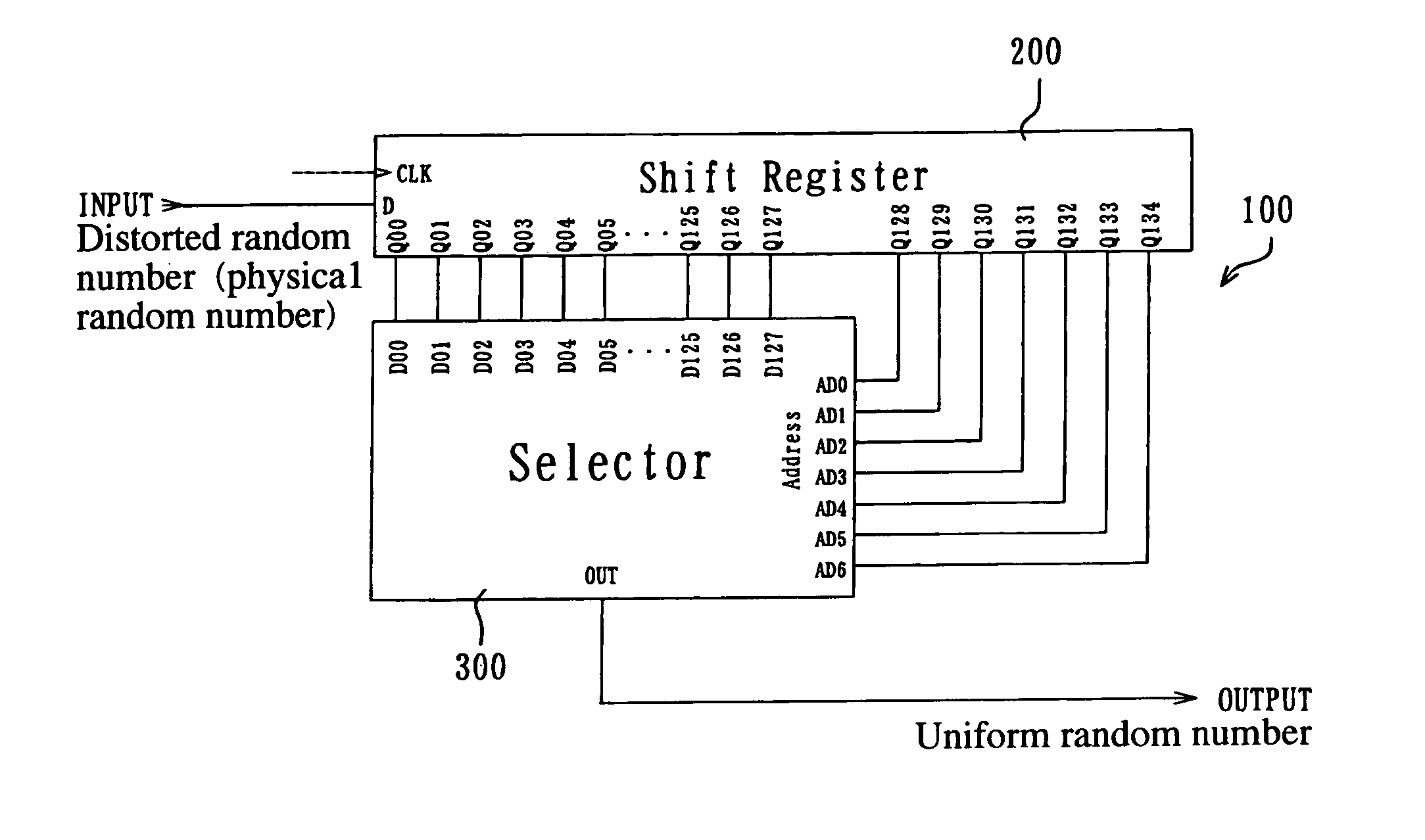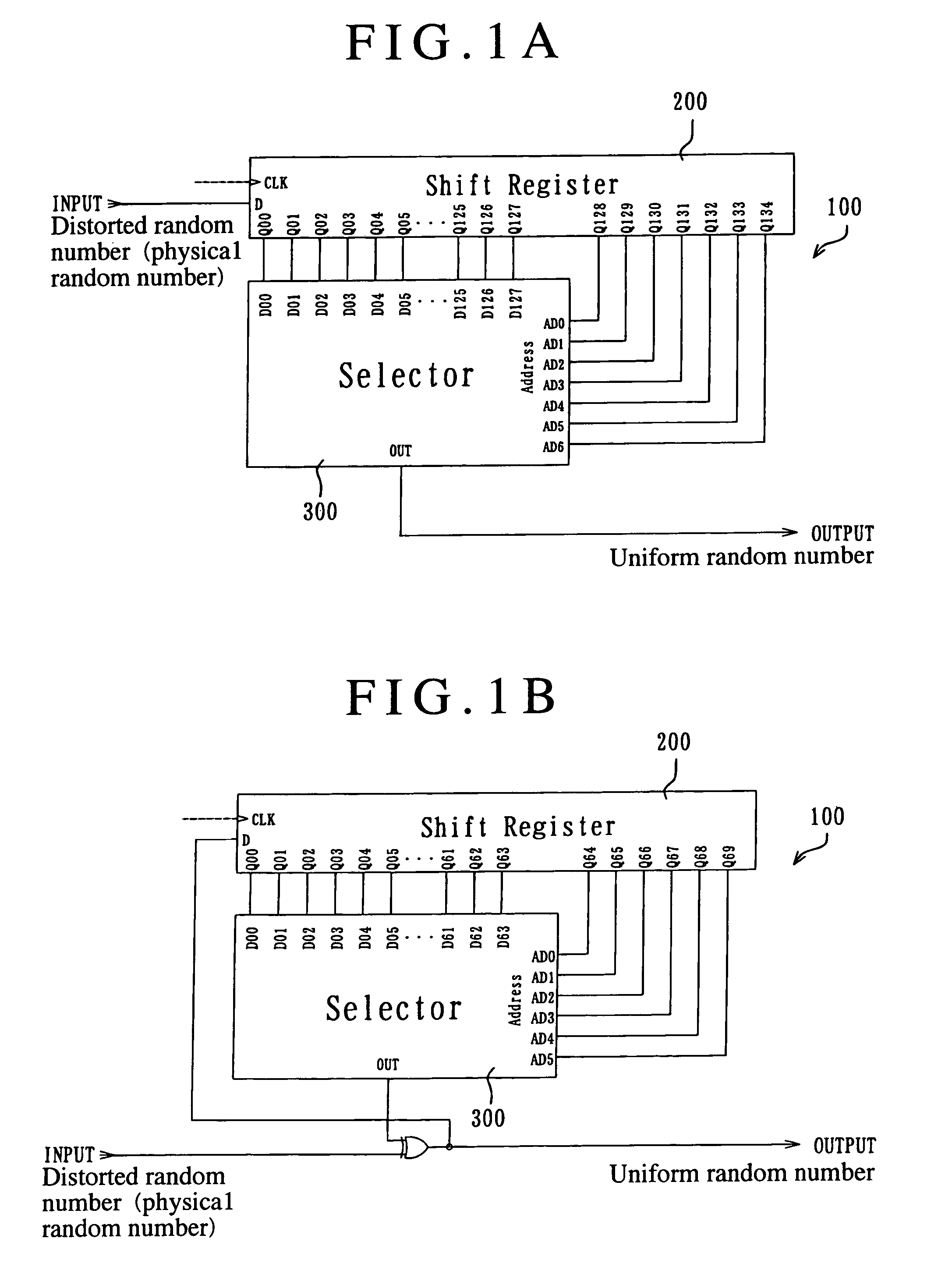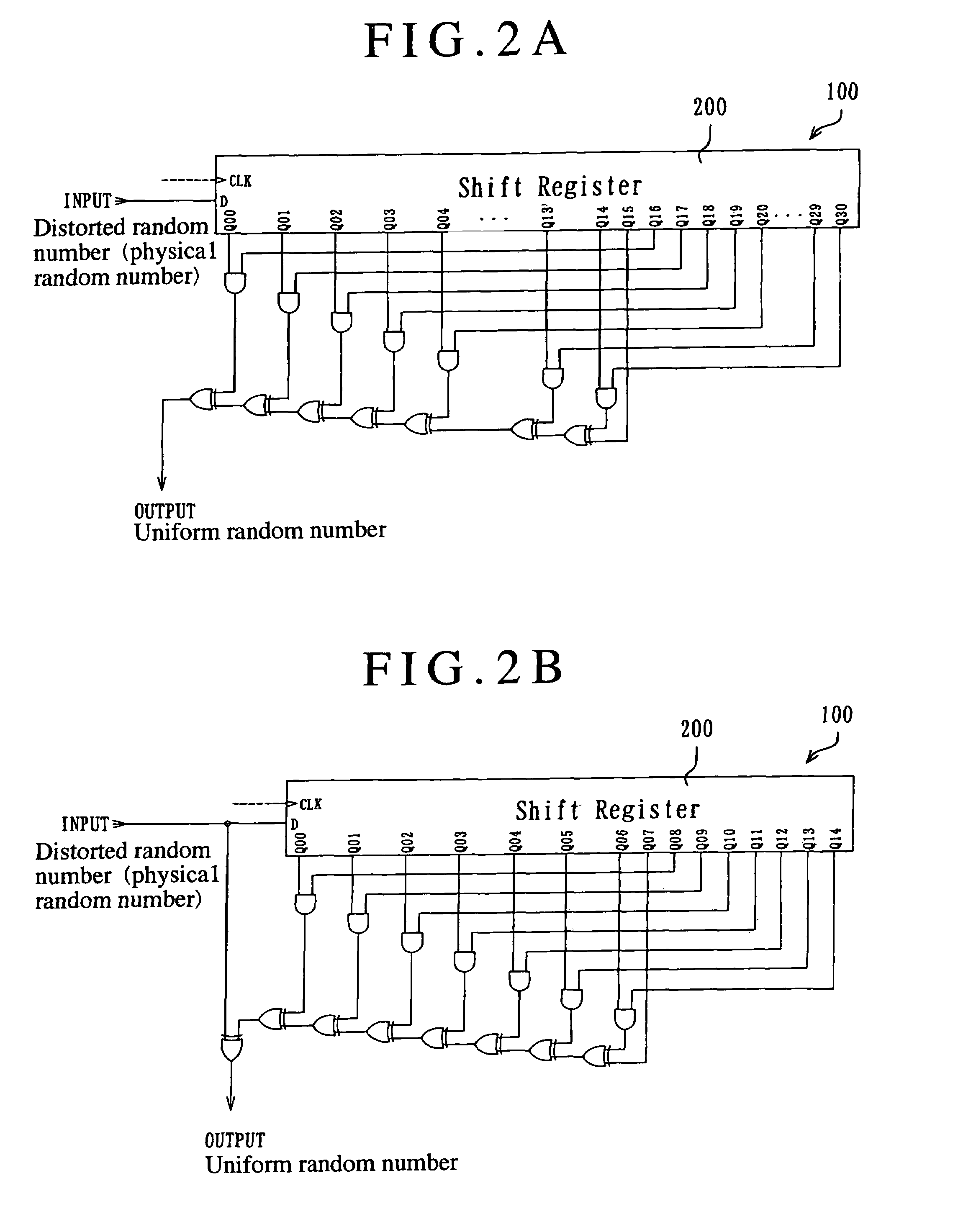Method of uniforming physical random number and physical number generation device
- Summary
- Abstract
- Description
- Claims
- Application Information
AI Technical Summary
Benefits of technology
Problems solved by technology
Method used
Image
Examples
first embodiment
[0059]The preferred embodiments of the present invention will be described below with reference to the drawings.
[0060]First of all, a random number uniforming circuit 100 as shown in FIG. 1A comprises a shift register 200 and a selector 300, in which binary random numbers (“0” or “1”) are sequentially input into a data terminal D of the shift register 200, and shifted to the outputs Q00 to Q134 every time a reference pulse signal input into a clock terminal CLK of the shift register 200 rises. And the random numbers of 128 bits in the outputs Q00 to Q127 of the shift register 200 are input into the data terminals D00 to D127 of the selector 3, and the random numbers of 7 bits in the outputs Q128 to Q134 of the shift register 200 are input into the addresses AD0 to AD6 of the selector 300.
[0061]Thereafter, in the selector 300, one bit is selected from the random numbers of 128 bits input into the data terminal D00 to D127 in accordance with the address value of 7 bits input into the ...
second embodiment
[0076]Referring to FIGS. 4 to 15, the second embodiment of a physical random number generator according to the present invention will be described below.
[0077]This physical random number generation device 91 comprises a physical random number generator 1, a random number verification circuit 21, a control circuit 94, a counter 95, a first selector 96, and a second selector 97, as shown in FIG. 4. The physical random number generator 1 comprises a serial physical random number generator 2, a counter 3, a shift register 4, a plurality of (m in FIG. 5) registers 5, a control circuit 6, an up / down counter 7, a selector 8, two delay circuits 9 on the reference clock side, and two delay circuits 10 on the read clock side, as shown in FIG. 5.
[0078]On the other hand, the random number verification circuit 21 has parts corresponding to four kinds of testing methods (Monobit Test, Poker Test, Runs Test and Long Runs Test) in conformance with the random number testing standard FIPS 140-2, as s...
third embodiment
[0107]In a third embodiment of the present invention, the physical random number generator comprises two integration circuits 105 for integrating the clock signal through a resistor R and a capacitor (condenser) C to output an integral waveform, two noise sources 106, two amplifiers 107 for amplifying the noise of the noise source 106 to output a noise signal, two mixers 108 for mixing the integral waveform and the noise signal, and two edge detection circuits 109 for detecting the first edge of jitter generated based on an output waveform of the mixer 108, as shown in FIGS. 16 and 18. Each edge detection circuit 109 has a circuit configuration, as shown in FIG. 17. A D-type flip-flop 110 for outputting “0” or “1” based on a phase difference in the output signal between each edge detection circuit 109 is provided at the latter stage of the edge detection circuit 109, as shown in FIG. 16. Furthermore, a D-type flip-flop 111 for synchronizing the random numbers with the clock signal i...
PUM
 Login to View More
Login to View More Abstract
Description
Claims
Application Information
 Login to View More
Login to View More - R&D
- Intellectual Property
- Life Sciences
- Materials
- Tech Scout
- Unparalleled Data Quality
- Higher Quality Content
- 60% Fewer Hallucinations
Browse by: Latest US Patents, China's latest patents, Technical Efficacy Thesaurus, Application Domain, Technology Topic, Popular Technical Reports.
© 2025 PatSnap. All rights reserved.Legal|Privacy policy|Modern Slavery Act Transparency Statement|Sitemap|About US| Contact US: help@patsnap.com



